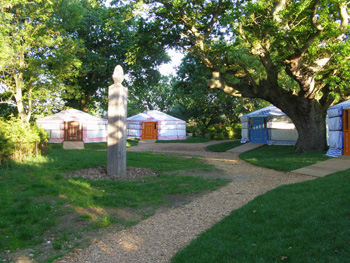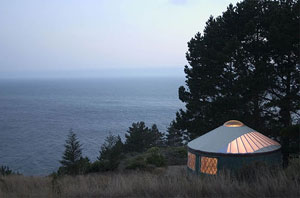Alternative Housing
Yurts
What is a yurt?
Made out of wooden or steel pieces and covered with cotton and vinyl liners, yurts are an environmentally friendly and inexpensive way of living. The compact shape of the yurt and their lightweight maximize strength while minimizing the use of materials.

History
The exact place where yurts were originated is unknown. Before Christ, Buddha, or Mohammed, tribes wanted to keep a balance between the world of people and nature. They created their homes (yurts) our of animal woll and wooden rings covered with felted mats. These allowed them to get through the harsh climates and move with the herds. Moving West, Bill Coperthwaite taught at a Quaker school in New Hampshire and taught his math students roof design, and built a yurt roof. He and his students built the first complete yurt with lattice walls, roof structure, and cloth covering.
A Little bit more...
Traditionally they were used by nomads in Central Asia however more modern yurts are used as cabins or cottages, temporary homes or even permanent homes. In most cases a yurt can be portable and they are very versatile. They can range from 8ft to 32ft wide and in some cases bigger. They can withstand year round weather and severely high winds. Many of these homes today come in pre-made kits and take only one or two days to assemble. They consist of a circular wooden frame. Although these homes are "green" they are not as spacious as people may desire in their home. On the positive side, they are cheap and easy to construct and good for the environment.

Different Types of Yurts
Traditional: Mongolian nomads have the traditional yurt style (called a ger). If a Turkic yurt has doors, they are 2 piece and open inward with colored rugs or felt to cover the doorway.
Fabric: Canvas-covered, roof rafters are notched and sat on the steel aircraft cable instead of directly on the trellis wall.
Tapered Wall: Wooden tapered walls
Frame Panel: Straight walled version of the original tapered wall yurt. The roof and walls are framed-in panels. Contains unique designs and could also be built with 2 stories joined together with rectangular connectors.